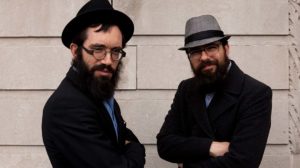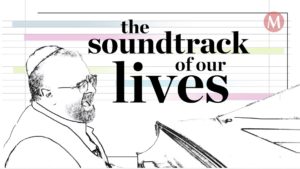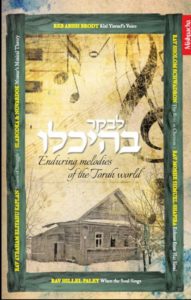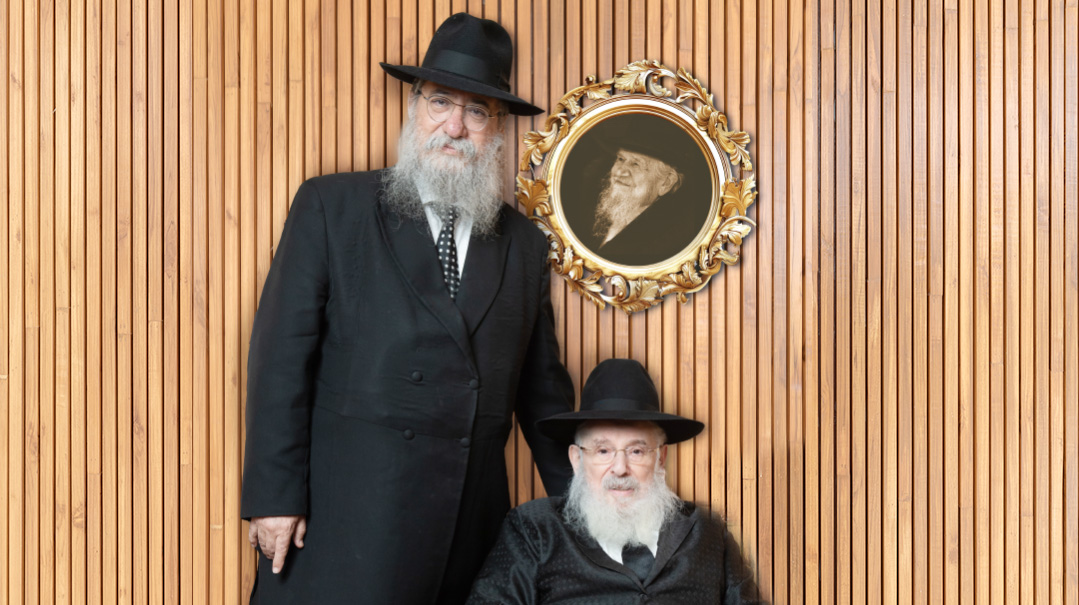Guardians of Glory
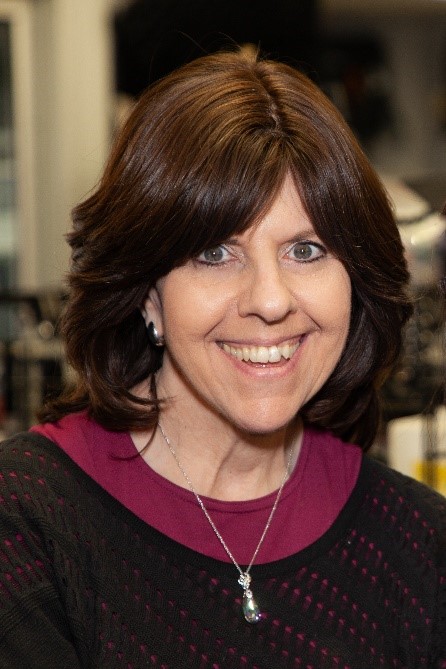
Desks, blackboards, and lockers were gone at Baltimore’s Bais Yaakov Eva Winer High School. In their place — a dazzling celebration of the greatest women in Tanach

Since May 2016 when 24 11th- and 12th-graders were elected to co-chair the triennial exhibit at Bais Yaakov Eva Winer High School of Baltimore the student body worked feverishly to convert an entire floor of their school into a museum. Under the tutelage of principal Rabbi Yechezkel Zweig and the direction of exhibit coordinator Mrs. Elise Wolf and student heads Daniella Attar and Elka Schwartz thousands upon thousands of hours of hard work finally paid off in January 2017 when visitors from Baltimore and beyond — including busloads of out-of-town students — enjoyed their guided tours.
From the moment they left the second-floor school stairway and stepped into the Aishes Chayil Hallway — the entrance to the “Guardians of Glory: A Celebration of Women in Tanach” exhibit — visitors were mesmerized by an ingenious multimedia celebration of our great forebearers.
Eishes Chayil Hallway
The exhibit begins in the Eishes Chayil vestibule the perfect frame for the journey on which we are about to embark. The Midrash Shocher Tov explains that each pasuk of Eishes Chayil parallels a different woman in Tanach who helped her husband family and Klal Yisrael as she served Hashem. Elaborately decorated this vestibule — introduced by a dioramic Shabbos dining room — is an inspiration for the hundreds of women and girls who walk through admiring the exquisite handiwork.
“Eishes Chayil is also compared to Shabbos and Torah” notes co-hallway head Yehudis Markowitz referring to the diorama. “The seforim shelves represent Torah and the Shabbos table is lit by a chandelier made out of pearls because an eishes chayil is compared to pearls. Just like a pearl is rare and takes a long time to grow and develop an eishes chayil doesn’t develop overnight.”
Leah Tendler co-hallway head adds “The ‘You’ curtain in our hallway that says ‘What do you see?’ written out of different middos shows how each of us can be an eishes chayil by developing the treasures within us our good middos to be the best person we can be.”
Sarah
She was the epitome of beauty inside and out and the co-heads of this display used innovative artistic techniques to capture the dual nature of Sarah’s life. “This reversible display is showing people trying to get out of the rain when viewed from this angle but if you look at it the other way you see people dancing in the rain ” demonstrates co-hallway head Tzipora Polsky.
“It’s showing that two people can have the same situation and have different perspectives on it. Sarah used the years that she couldn’t have children to teach people about Hashem… She considered all the years of her life equally good” adds co-hallway head Bryna Tusk.

A large colorful 4800-bottlecap curtain with a neiros design acts as a partition between the beginning of the hallway display Sarah’s tent and the rest of the display — her kitchen a river made from cracked glass with a wooden plank bypass leading up to Yerushalayim and ultimately Mearas Hamachpeilah gateway to the World to Come.
Rivkah
“It took about 8000 candles to make this” says co-room head Shira Tenenbaum pointing to a pair of larger-than-life silver leichter glued to the wall adjacent to a glass showcase of fresh-baked challos. “These represent two of the three nissim that returned when Rivkah moved into Sarah’s tent — the challos stayed fresh the candles stayed lit from Shabbos to Shabbos and the Ananei Hakavod rested above the tent.
“We chose to focus on Rivkah’s chesed and the entire middle of the room focuses on chesed” continues Shira. “All the letters are little suitcases with luggage tags depicting hachnassas orchim; bikur cholim is spelled out in Band-Aids.”
Rochel
Prominent in the Rochel display is a double-helix DNA model, constructed from pool noodles and plaster of Paris. “Rachel instilled spiritual DNA into the Jewish People — the ability to give of yourself to others,” remarks co-room head Racheli Epstein. “This gevurah is part of our nation until this day, allowing us to rise through hard times, persevere, and help inspire others.”
“Our entire ceiling is covered in hanging tulle representing Rochel Imeinu’s wedding gown,” says co-room head Emmy Zelinger. “Giving up the simanim to her sister was one of the greatest examples of Rachel’s gevurah, and it affected her whole life. To reflect this global impact, we covered the entire ceiling with tulle.”
Leah
A colorful, lush garden greets you in Leah’s room. “We compare Leah’s life to a garden, because just like the rain waters the flowers and makes them grow, the tears Leah she cried — because she didn’t want to marry Eisav, and because of everything she put into raising her children — became her beautiful garden,” explains co-room head, Sara Hirsch.
“These are baby pictures of everyone in the high school,” says co-room head Basya Rochkind, pointing out another display. “They stand for kibbud av v’eim, because the root of that mitzvah is our recognition of our debt to our parents, for bringing us into the world. The middah we focus on here is the hakaras hatov to Hashem Leah had when she gave birth to Yehudah.”
Miriam
Miriam excelled in the middah of emunah — she encouraged the women of Mitzrayim to be strong, assured them the redemption would come. “This picture depicts Miriam’s nevuah that in the future, Yocheved would give birth to a son that would bring Bnei Yisrael out of Mitzrayim,” explains co-room head, Sara Blechman.
“It’s comprised of 10,000 pistachio nut shells that we got from a farm,” adds co-room head, Rachelli Rappaport. Afraid that someone touring the exhibit might have a nut allergy, the team washed each shell individually, a feat that took 13 hours.
Passing through blue-and-white tulle and feeling a sprinkle of water provides the illusion of experiencing Kri’as Yam Suf. “Parallel mirrors — painted with colorful Bnei Yisrael figures — gives the effect of a reflection a few times, because Kri’as Yam Suf occurred with a separate path for each of the twelve Shevatim,” continues Sara.
Devorah
“Devorah sat under a tomer Devorah — a date palm of Devorah,” says co-room head Reena Back, pointing to a sandy, beach-like scene with a realistic-looking palm tree. The top of the palm was made from lulavim; the bark from approximately 14,500 date pits donated by a California date company. “That’s where she gave her nevuah and advice and judged Bnei Yisrael,” adds co-room head, Tehilla Schwartz.
As we enter the next part of the room, through a curtain-like partition of approximately 70 antique 33 RPM record albums bearing labels that say “Shiras Devorah,” Tehilla explains, “Shiras Devorah was sung after the war was won against Sisera and his army, so the entrance to the section commemorating the shirah is made from albums.”
Chanah
She was the paradigm of a baalas tefillah during her times of pain. After she gave birth to Shmuel Hanavi, she expressed her overflowing gratitude and joy in one of the most poignant shiros ever composed, Shiras Chanah — recited by many women during licht bentshen.
The most powerful place for tefillah, a beis haknesses, is depicted in this room. “We chose to make our room a shul because Chanah showed the koach of her tefillah,” emphasizes co-room head Malky Krakauer.
Around the shul’s perimeter are colorful displays behind arched windows. “This whole section portrays Chanah’s life before she had a baby, when she felt separated from the community, so we put that part of the storyline behind a window,” adds co-room head Meira Gross.
The greatest challenge for Malky and Meira and their committee of 28 girls, was constructing the large, multi-colored “Shiras Chanah” mosaic, made up of a few hundred thousand mini crystals.
Avigayil
To reflect Avigayil, who is praised as a tovas seichel, having common sense, and epitomized the chochmah that’s the hallmark of every Jew, this display is divided according to the three types of wisdom: chochmah, binah, and daas. Co-room head Esther Meth elaborates. “This display depicts the different types of people who are considered wise: one who applies what he learns, one who learns something from everyone, and one who understands that his actions have ramifications.”
“At the center of the room, we built an eitz hadaas out of old textbooks,” says co-room head Hadassah Baer. “We wanted to show how we use our knowledge of good and bad to make choices many times on a daily basis.”
Chuldah
The wife of Shalom ben Tikvah, the gadol hador, Chuldah would sit by the south gate of Har Habayis, later referred to as Shaar Chuldah in her memory. She prophesized 40 years before the destruction of the First Beis Hamikdash, along with Yirmiyahu and Tzefanyah, and encouraged Bnei Yisrael to do teshuvah, in hope of nullifying the decree of the Churban. Knowing that Churban was imminent, she instructed King Yoshiyahu to hide the Aron, ensuring that we’d have it for the future Geulah.
“The name Chuldah means a weasel, and just as a weasel digs tunnels underground in a secretive way, so too, Chuldah Haneviah prepared the Geulah in a secretive way,” points out co-room head Simi Tendler.
“This is our modern-day teshuvah section,” continues co-room head Miriam Goldberg. “In her nevuah, Chuldah told Bnei Yisrael, ‘Because you are serving avodah zarah, the Galus is going to come.’ ” The section even features a recording of Rabbi Yissocher Frand’s teshuvah drashah, in which he encourages his listeners not to let technology take over our lives.
Esther
A courtyard greets us at the entrance of the Esther hallway, lined with white pillars constructed from approximately 70 white-painted pool noodles wrapped in green myrtle.
“Esther’s other name was Hadassah, which means myrtle,” explains co-hallway head, Tova Miller, who leads us next to the beauty room, a reference to the palace where the girls would prepare themselves for a year before presenting themselves to Achashveirosh — depicted by a plethora of perfume jars, cosmetics, and jewelry. A nearby gate serves as the entranceway to the actual palace.
“This is the exit room of our palace,” concludes Tova. “Hashem was hiding behind the curtains at the time of the Purim story. The curtains are pulled back because the pasuk is telling us that one day we will truly see that Hashem is the true G-d and that He is everywhere.”
(Originally featured in Family first, Issue 531)
Oops! We could not locate your form.


